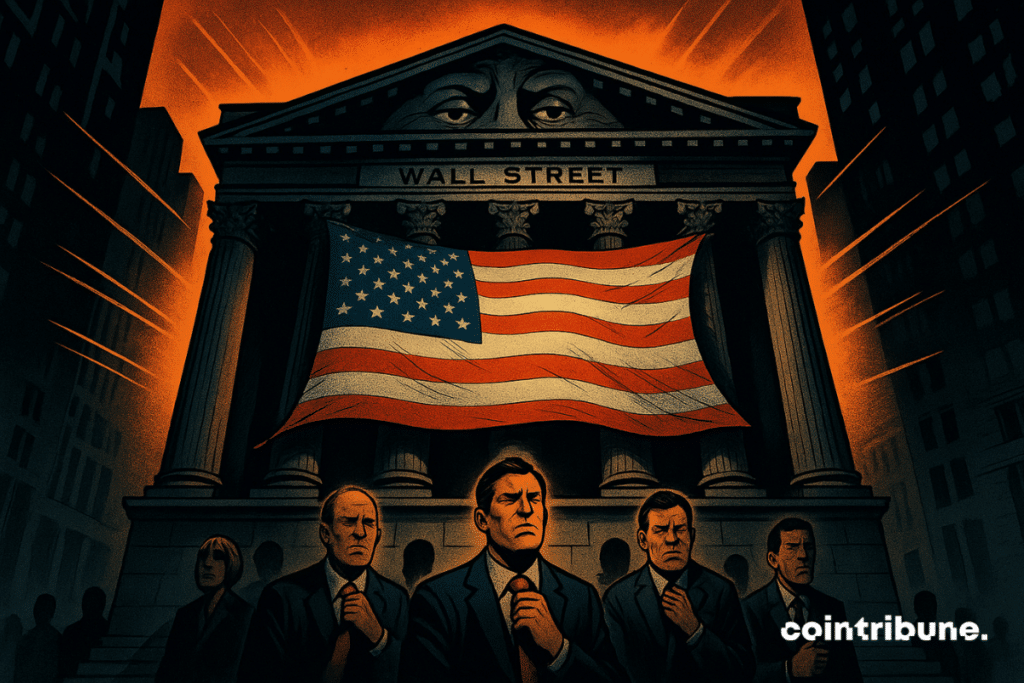Wall Street Holds Its Breath Ahead of September Employment Report
In the United States, the employment report expected this Friday, September 5, could seal the fate of interest rates. Markets, fueled by hopes of monetary easing, are watching for the slightest sign of weakness. However, the equation remains fragile: a slowdown sufficient to justify a rate cut, without reigniting fears of a sharp economic downturn.

In brief
- Financial markets nervously await the US employment report scheduled for Friday, September 5, 2025.
- The previous month’s release showed a marked slowdown, with only 73,000 job creations, bolstering hopes for monetary easing.
- The August report, with 75,000 job creations expected, could confirm this trend, provided components like unemployment and wages do not disappoint.
- This climate of both economic and political uncertainty could heavily weigh on upcoming monetary decisions and market stability.
A lull in employment fuels bets on monetary easing
The latest US employment report marked a turning point for market expectations, unlike the rise recorded after the release of July inflation figures. July saw only 73,000 nonfarm job creations, a figure well below forecasts. This halt, reinforced by downward revisions of May and June data, was perceived by investors as a tangible sign of labor market weakening.
This dynamic strengthens expectations of rate cuts from the Federal Reserve. The US labor market has slowed, notes Alex Grassino, chief economist at Manulife Investment Management, emphasizing that components of the upcoming report, notably unemployment rate and hourly wages, should send the same message.
Leading up to the August report, expected this Friday, September 5, the market anticipates confirmation of this slowdown. The expected data and market participants’ comments point toward a scenario of reinforced monetary support:
- 75,000 job creations are expected for August, a historically low figure, especially in a non-recessionary period;
- Fed funds futures now price in an 89% chance of a 25 basis points rate cut at the next Fed meeting on September 16-17.
For Jack Janasiewicz, strategist at Natixis IM, “Lower rates probably trump a modestly slowing labor market, and that probably puts a floor underneath the economy and … the stock market”.
Drew Matus (MetLife Investment Management) adds “It would take very broad-based strength in the report in order to get the Fed to rethink the idea of moving rates lower”, before adding the chances are “pretty low”.
The consensus thus forms around a scenario in which a continued slowdown in employment would give the Fed the maneuvering room needed to start a series of rate cuts.
However, this strategy, although expected, rests on a delicate balance between supporting the economy and controlling persistent inflationary pressures.
Contradictory signals
Alongside economic data, financial markets continue to evolve in a contradictory dynamic. The S&P 500 rose 1.9% in August, despite a historically difficult month for US stocks.
“Over the past 35 years, September has ranked as the worst-performing month of the year for the S&P 500, with an average decline of 0.8%”, recalls the Stock Trader’s Almanac. This unexpected summer performance is partly explained by investor enthusiasm around artificial intelligence prospects, although tech stocks showed signs of weakness late in the month, notably with expectations around Broadcom’s earnings.
Beyond market dynamics, an institutional factor weighs on expectations. Donald Trump’s attempt to remove Fed Governor Lisa Cook has revived fears about the central bank’s independence. Cook took the matter to court, arguing that the president does not have the power to dismiss her.
“Many things market participants took for granted are now being questioned”, warns Grassino. This climate fuels latent volatility, as the Fed’s positioning also becomes a subject of political speculation.
In this uncertain context, bitcoin and major cryptos could stand out. Easing confirmed by the Fed would boost the attractiveness of alternative assets, particularly cryptos, due to their partial decoupling from traditional markets.
The convergence of these institutional tensions and the economic situation thus feeds structural uncertainty. In the short term, employment figures in line with or slightly below expectations could reinforce the Fed’s flexible trajectory. If rates fall, as Goldman Sachs expects, it will be as much a response to economic reality as to a pressured institutional environment.
Maximize your Cointribune experience with our "Read to Earn" program! For every article you read, earn points and access exclusive rewards. Sign up now and start earning benefits.
Diplômé de Sciences Po Toulouse et titulaire d'une certification consultant blockchain délivrée par Alyra, j'ai rejoint l'aventure Cointribune en 2019. Convaincu du potentiel de la blockchain pour transformer de nombreux secteurs de l'économie, j'ai pris l'engagement de sensibiliser et d'informer le grand public sur cet écosystème en constante évolution. Mon objectif est de permettre à chacun de mieux comprendre la blockchain et de saisir les opportunités qu'elle offre. Je m'efforce chaque jour de fournir une analyse objective de l'actualité, de décrypter les tendances du marché, de relayer les dernières innovations technologiques et de mettre en perspective les enjeux économiques et sociétaux de cette révolution en marche.
The views, thoughts, and opinions expressed in this article belong solely to the author, and should not be taken as investment advice. Do your own research before taking any investment decisions.